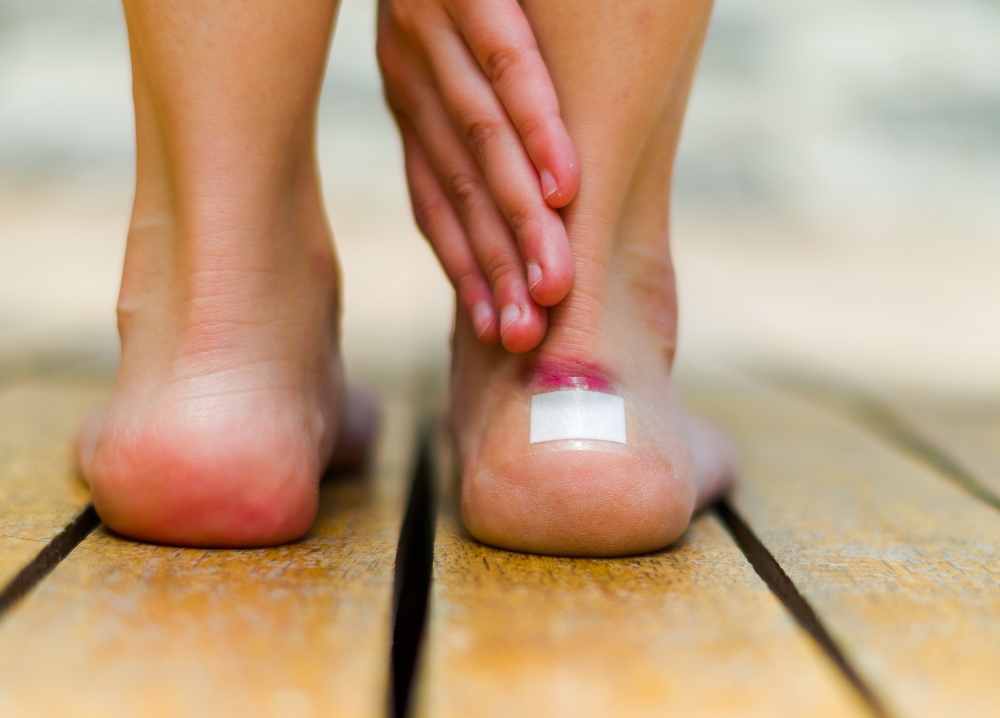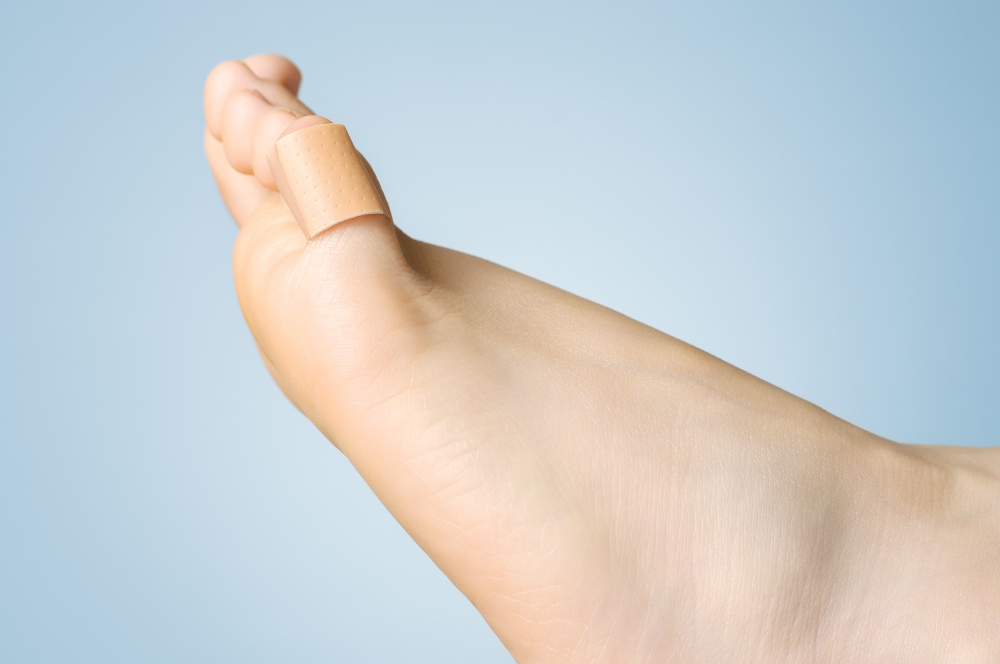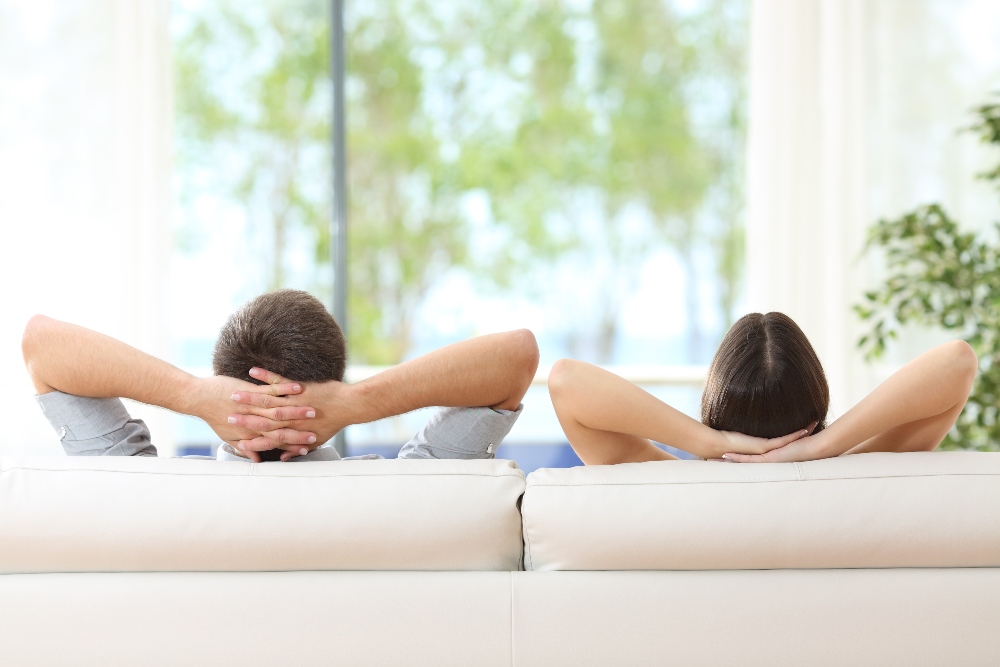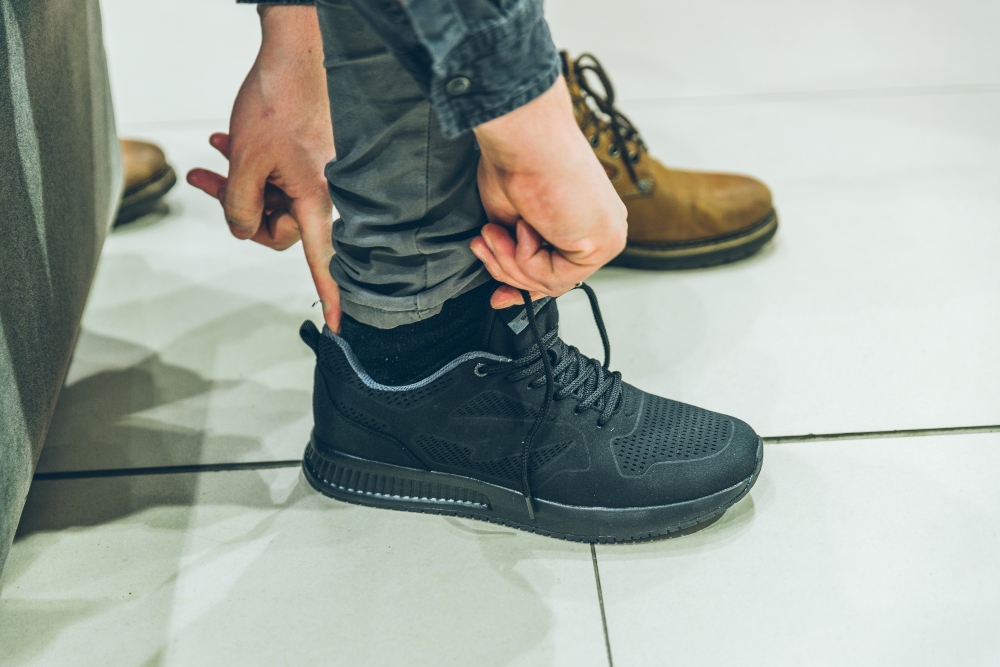We’ve all done it! You throw on a new pair of shoes and by the end of the day, you have a blister the size of Mount Rushmore, throbbing on your heel.
While some shoes do need to be “broken in,” most blisters are caused by poorly fitted footwear.
Here’s what you can do to treat your foot blisters, as well as some advice— straight from the podiatrist’s themselves— on preventing them from forming:

Don’t Pop or Peel that Blister!
The first thing that we want to do when up against a nasty blister is pop that sucker! But there’s not much benefit to popping a blister; in fact, there’s a lot more risk.
Skin forms over a blister to trap protective fluid. This coverage functions as a barrier between your open wound and harmful bacteria. Ripping off that helpful skin and fluid can leave you more susceptible to infection.
Pierce it With a Needle
If you are experiencing a lot of discomfort, you may find some relief in draining your foot blister.
Don’t try to puncture the blister with your fingernails, which contain a great deal of bacteria under their surface. Especially, never try creating a hole in your blister with an unsanitary tool, or cutting into it with scissors or toenail clippers.
The best way to drain a swollen blister is by creating as small as a hole possible, to drain the fluid without removing the skin covering the wound. A sterilized needle should do the trick. Simply dip it in rubbing alcohol and insert it into the edge of the blister to drain any liquid.
Keep it Covered

After tampering with your blister, you’ll want to make sure it’s clean and protected. Rub some antibiotic ointment on the area, put a bandage over it, or gauze if it’s a large blister.
If the blister is on the bottom of your foot, you might need to use some padding, to keep the protective layer in place and cushion the wound.
Never walk around barefoot while you have an open wound on your foot! The wound can attract viral, bacterial or fungal infections and worsen your problems.
Stay Off Your Feet
Even after you cover your blister, you might want to stay off your feet for a few days, depending on the area of the wound. Blisters on the bottom of your feet, for example, may take longer to heal if you are irritating the wound day after day.
A blister will naturally heal on its own, but it sure helps to avoid the pressure that caused it in the first place! Let’s look next at ways to prevent blisters from forming in the first place.

Preventing Future Foot Blisters
Blisters are often caused by ill-fitting footwear— that’s too tight or too loose—or by socks that are too thin or too thick.
Here are some ways to avoid any future foot blisters:
- Pick the right socks. Always wear socks with sneakers or with most closed-toed shoes. Not just any sock will do… Look for nylon or moisture-wicking socks that aren’t too tight or loose. Also, be aware of the thickness of your socks, and if you need special socks with extra padding, around maybe the heel, for example.
- Keep your feet dry. Moisture can cause your feet’s skin to soften, and when combined with friction from poorly fitted shoes or socks, can tear the skin or cause cuts. If you suffer from extremely sweaty feet, apply baby or foot powder to the area of concern, like between your toes.
- Get the right footwear. This is probably the best thing you can do to prevent foot blisters. Blisters often form when wearing shoes that are too tight, which rub and cause pockets beneath the skin from excessive pressure. Here are our best shoe shopping tips for finding a proper fit. If you have blisters on the bottom of your feet or between your toes from flimsy flip-flops, check out our other article on finding comfortable, supportive sandals.
-
- Look out for seams/areas that rub. Do your sneakers have an uncomfortable inseam or a sharp corner/region that’s causing rubbing? Or maybe your shoes are just old, and you shift all around now that the padding is worn. Swap out those annoying pairs for more comfortable alternatives.
- Look out for seams/areas that rub. Do your sneakers have an uncomfortable inseam or a sharp corner/region that’s causing rubbing? Or maybe your shoes are just old, and you shift all around now that the padding is worn. Swap out those annoying pairs for more comfortable alternatives.

- Ask about a custom fit/insert. If no matter what you do, you still get foot blisters, your feet might need unique support or care. Ask a podiatrist, who may ask to see your footwear and can troubleshoot the issue, or can get you fitted into a custom shoe or hooked up with inserts.
- Stop as soon as you feel the discomfort. As soon as an activity starts causing pain or you feel the shoe rubbing, get out of that footwear (or just off of your feet!). Runners are often victims of foot blisters, after pushing themselves a few extra miles too far. Be on the lookout for red skin, which is your body’s warning sign of irritation.
- Build some calluses. While not always the most attractive feature, calluses act as natural padding against friction. Instead of sanding down your calluses, be thankful that they’re there to protect your feet against developing blisters!
When To Come In
Because blisters usually heal on their own, you often won’t need professional care. However, if you suspect you are developing or have an infection, seek the help of a podiatrist.
Sometimes other conditions, like bunions or hammertoes, can cause excessive rubbing and some awfully painful blisters. These foot conditions might need their own corrective measures in order to prevent the development of future blisters.
Diabetic patients, in particular, must be very careful when dealing with blisters, as popping or draining an infected blister can mean big problems.
Luckily, we’ve got a full team ready to help. Visit our contact page to make a quick appointment or give us a call today at 239.936.5400.
Categorized in: Blog